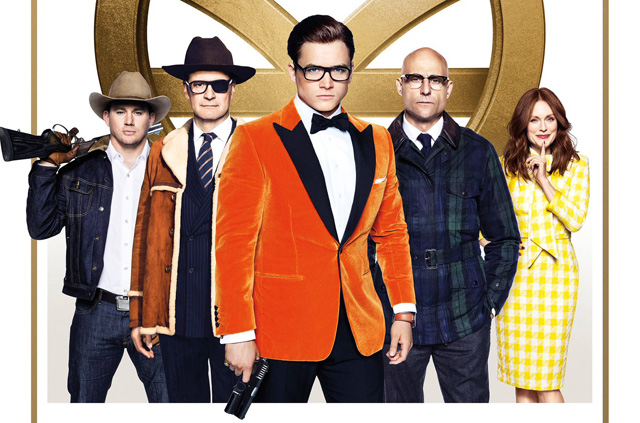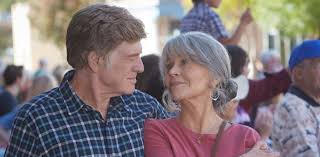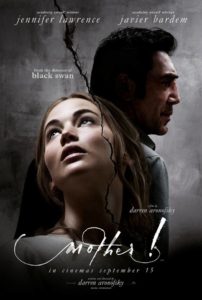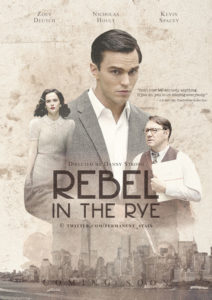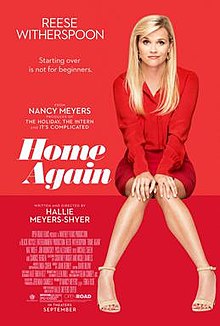Kingsman: The Golden Circle
Posted on September 21, 2017 at 2:54 pm
B| Lowest Recommended Age: | Mature High Schooler |
| MPAA Rating: | Rated R for sequences of strong violence, drug content, language throughout and some sexual material |
| Profanity: | Some strong language |
| Alcohol/ Drugs: | Drinking and drunkenness, drugs and drug dealing |
| Violence/ Scariness: | Extensive, very graphic peril and violence with many characters injured and killed, sad deaths, disturbing images |
| Diversity Issues: | None |
| Date Released to Theaters: | September 22, 2017 |
| Date Released to DVD: | December 11, 2017 |
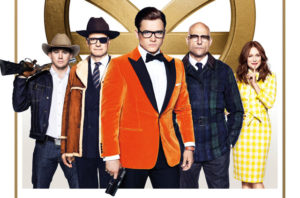
The ultra-elite and impeccably tailered Kingsmen are back, well, a couple of them, in this stylish and slightly less transgressive sequel from writer/director Matthew Vaughn, based on the graphic novels by Mark Millar and Dave Gibbons. A couple of stunning action sequences, a delicious villain named Poppy (Julianne Moore), and Elton John(!) make it a watchable entertainment, and the return of two characters who were killed in the first film makes the dispatching of many more characters more cheeky than tragic.
Eggsy (Taron Egerton) has come a long way from the unrefined street kid of the first film. He is now happily living with the Swedish princess (Hanna Alström), wearing elegant bespoke suits, and still happily hanging out with his old friends and his dog, JB. But he is kidnapped by Charlie (Edward Holcroft), the former rival he thought was killed in the mayhem of the first chapter. It turns out Charlie only lost an arm, now replaced with a prosthetic that has a mind of its own, and his voice, also with a mechanical replacement. There’s a terrifically kinetic fight and chase scene, suitably accompanied by Prince’s “Let’s Go Crazy” that starts the movie off with a bang.
Then just about all the Kingsmen are killed off and Eggsy and Merlin (Mark Strong, with a Scottish burr and a soft spot for John Denver) have to meet up with their American counterparts, the Statesmen to save the world from Poppy, a ruthless international drug dealer with the demeanor of a 1950’s TV commercial happy housewife. She responds to betrayal like it is ring around the collar or waxy yellow buildup, except than instead of finding a better cleaning product, she puts those who fail her through a meat grinder. Literally.
Poppy would like to live in the world of the 1950’s, or, rather, the 50’s as portrayed in nostalgic re-creations like “Grease” and “Happy Days,” and has created an adorable Disney-style replica in the midst of the South American jungle, where she directs worldwide operations of her highly successful drug manufacture and distribution business. But she wants more.
The filmmakers are clearly having a blast and that is fun for us, except when it goes overboard. It is much too long at nearly two and a half hours. Channing Tatum is a hoot but his section of the story is entirely expendable. And it is a shame that once again, Halle Berry is utterly wasted in a role that uses her for screen candy. Same with her fellow Oscar-winner, Jeff Bridges, whose appearance is all crag and chaw. But the third Oscar-winner, Colin Firth, also playing a character who was killed in the first movie except not because who cares, is a pleasure to watch, as he has to play his character as much younger and more benignly innocent, and then again as sophisticated and determined. Elton John is a hoot as himself and the movie has a bubbly, delirious quality that excuses almost as much as it hopes it will.
Parents should know that this film includes extended very explicit peril and violence with many characters injured and killed and some disturbing and graphic images including characters being put into a meat grinder and some gruesome deaths, strong language, drugs and drug dealing, sexual references and situations with some graphic images.
Family discussion: How are the Statesmen different from the Kingsmen? Why did Merlin make that choice?
If you like this, try: the first “Kingsman” movie and “Our Man Flint”

